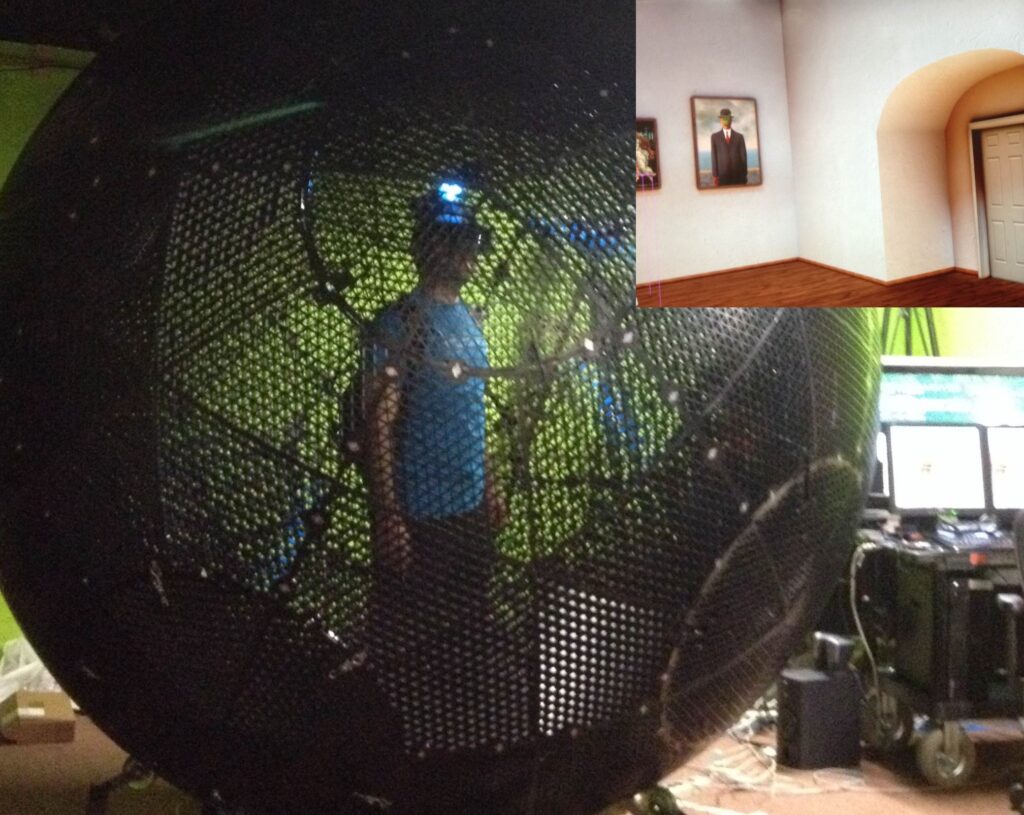
One of the goals of much virtual reality (VR) research is to increase realism. In particular, many techniques for locomotion in VR attempt to approximate real-world walking. However, it is not yet fully understood how the design of more realistic locomotion techniques affects user task performance.
Experiment 1:
We performed an experiment to compare a semi-natural locomotion technique (based on the Virtusphere device) with a traditional, non-natural technique (based on a game controller) and a fully natural technique (real walking). We found that the Virtusphere technique was significantly slower and less accurate than both of the other techniques. Based on this result and others in the literature, we speculate that locomotion techniques with moderate interaction fidelity will often have performance inferior to both high-fidelity techniques and well-designed low-fidelity techniques. We argue that our experimental results are an effect of interaction fidelity, and perform a detailed analysis of the fidelity of the three locomotion techniques to support this argument.
Experiment 2:
Virtual reality (VR) locomotion techniques that approximate real-world walking often have lower performance than fully natural real walking due to moderate interaction fidelity. Other techniques with moderate fidelity, however, are intentionally designed to enhance users’ abilities beyond what is possible in the real world. We compared such hyper-natural techniques to their natural counterparts on a wide range of locomotion tasks for a variety of measures. The evaluation also considered two independent components of interaction fidelity: bio-mechanics and transfer function. The results show that hyper-natural transfer functions (here, the Seven League Boots technique) can improve locomotion speed and some aspects of user satisfaction, although this can come at the expense of accuracy for complicated path-following tasks. On the other hand, hyper-natural techniques designed to provide biomechanical assistance (here, using Kangoo Jumps Boots) had lower performance and user acceptance than those based on natural walking movements.
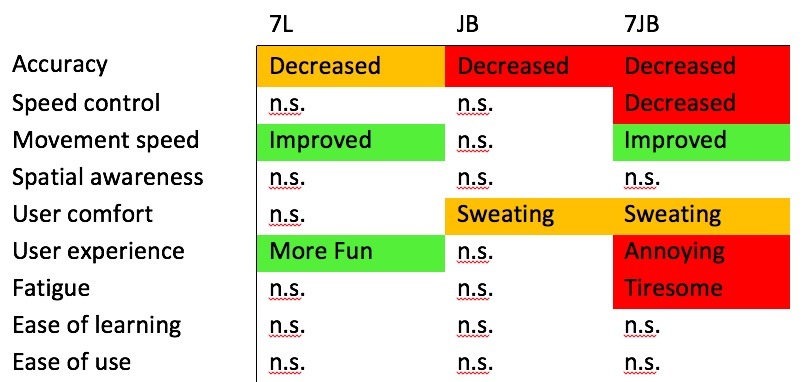
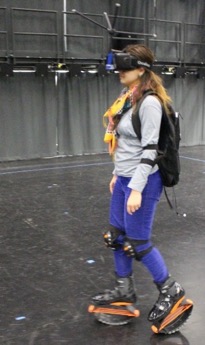
Meta-analysis:
To provide further support for our hypothesis that moderate interaction fidelity can be harmful in VR locomotion, we performed a meta-analysis of the literature. The conceptual hypothesis is illustrated below. It indicates that low-fidelity techniques may have a wide range of effectiveness, depending on the technique and the measure of effectiveness, while high-fidelity techniques will almost always have a high level of effectiveness. Moderate-fidelity techniques, however, will not be able to achieve a high level of effectiveness due to an “uncanny valley” effect; these techniques present themselves as natural but are not.
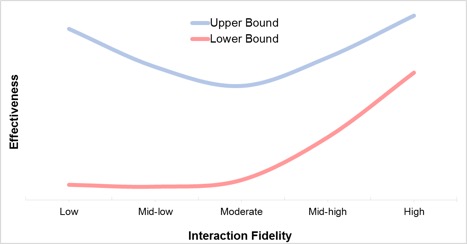
We assessed research literature that compared two or more locomotion interfaces with varying levels of fidelity. The meta-analysis looked at 20 research papers in which two or more locomotion techniques with different levels of interaction fidelity were compared. To classify the fidelity level of each technique, we first did a FIFA analysis. The FIFA analysis gave us insights about how to compare the different techniques to their natural counterparts and to each other. Then we classified each technique into one of five categories: low, mid-low, moderate, mid-high, and high level of fidelity. The tasks and measures used in the various experiments from the literature are often very different from each other. We normalized the quantitative results regarding locomotion techniques using a scale of zero to one, making it possible to compare all results in a single framework. For each specific task and specific measurement, we extracted the best and worst possible cases, and employed these values for normalization.
With the exception of a few outliers, the data we extracted from the meta-analysis fit our hypothesis.
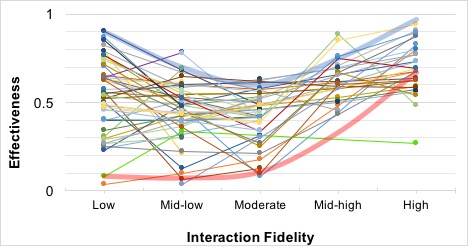
In addition, we identified two groups of effectiveness measures with different characteristics. Some measures, such as presence and spatial memory, demonstrate increasing effectiveness as interaction fidelity increases.
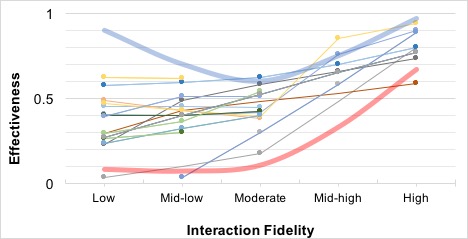
A second set of measures, such as task completion time, locomotion accuracy, and ease of use, result in the U-shaped “uncanny valley.”
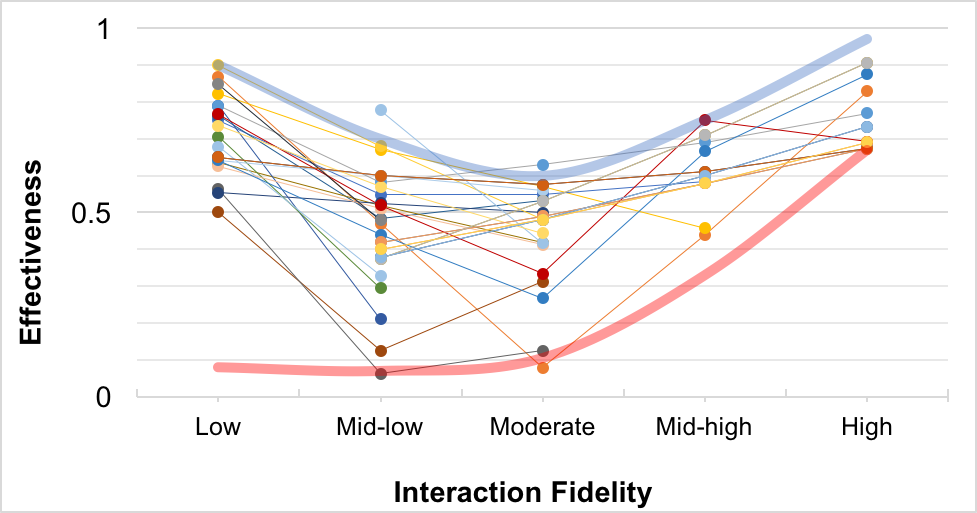
Conferences
A Taxonomy for Designing Walking-based Locomotion Techniques for Virtual Reality Conference
the 2016 ACM CompanionProceedings of the 2016 ACM Companion on Interactive Surfaces and Spaces - ISS Companion textquoteright16, ACM Press ACM Press, Niagara Falls, Ontario, CanadaNew York, New York, USA, 2016, ISBN: 9781450345309.
Comparing the Performance of Natural, Semi-Natural, and Non-Natural Locomotion Techniques in Virtual Reality Conference
IEEE 3D User Interfaces (3DUI), 2015.
ICAT - EGVE textquoteright15: the 25th International Conference on Artificial Reality and Telexistence and 20th Eurographics Symposium on Virtual Environments, 2015.

